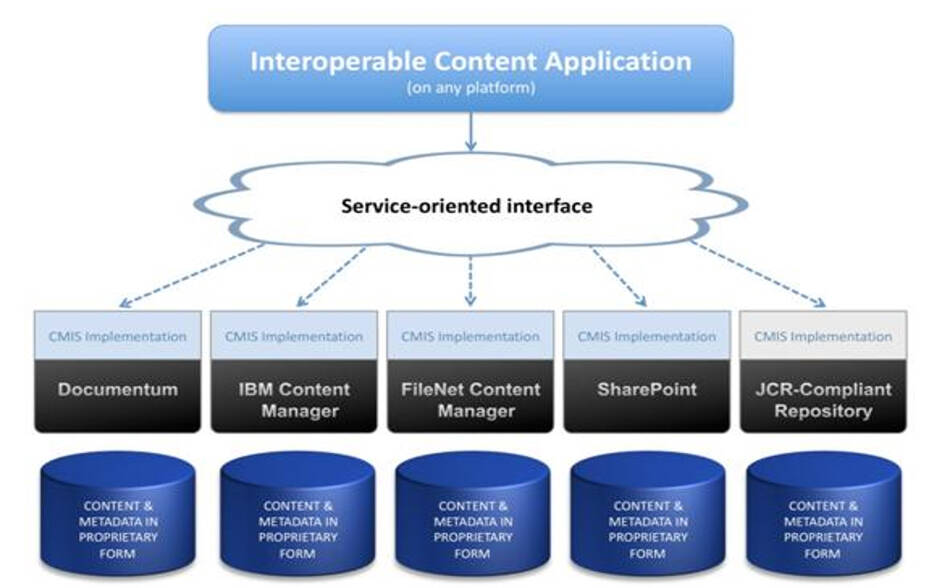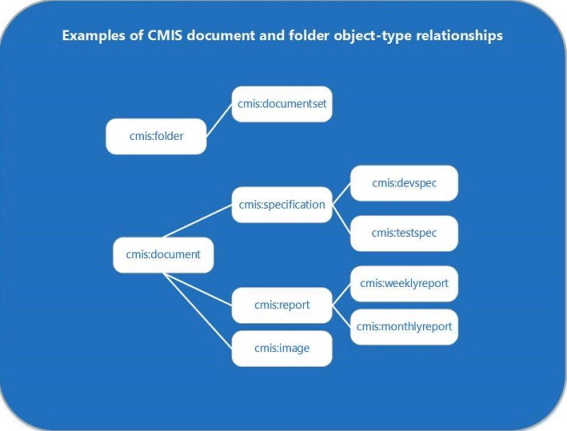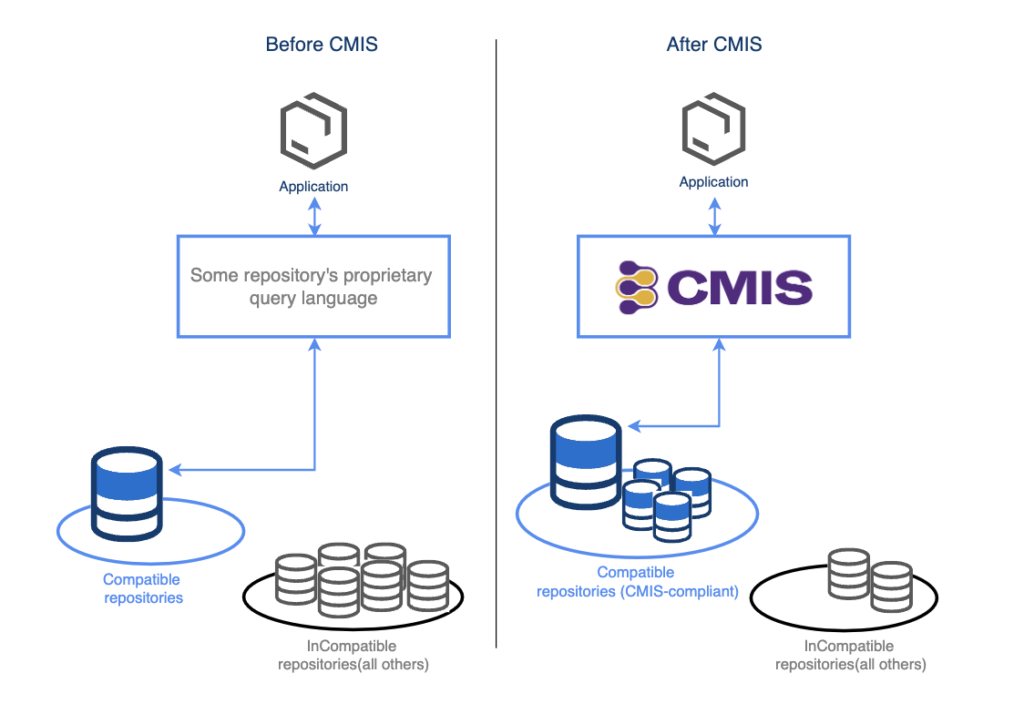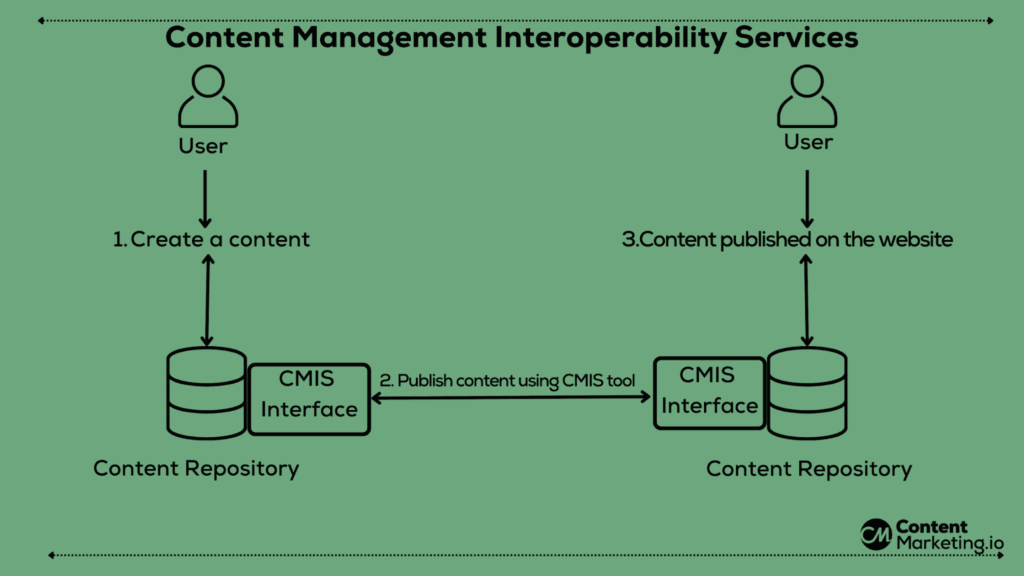All You Must Know About Content Management Interoperability Services

Content Management Interoperability Services (CMIS) is a specification supported by the Organization for the Advancement of Structured Information Standards (OASIS) interoperability standard that allows users to share and access data across multiple content management (ECM) systems.
This service was approved in 2010 and developed by an industry group consisting of several large ECM system vendors, which include big names like Microsoft, IBM, Oracle, and SAP.
In this blog, we will explore everything there is to know about Content Management Interoperability Services, CMIS specifications, and how to use CMIS for Enterprise Content Management Systems.
What Are Content Management Interoperability Services?
CMIS is an OASIS-supported interoperability standard, that was developed with the support of several large ECM system vendors. It defines a set of data models and APIs (application programming interface) that provide common pathways for applications to access and edit content stored in multiple systems, regardless of the vendor or platform.

Before the widespread adoption of CMIS, content management was often in silos. The content was stored in separate systems and managed using multiple platforms and systems. This made it challenging for organizations to access and manage content that was stored across platforms. It resulted in inefficient workflows, duplication of effort, and mismanagement.
CMIS addresses this problem by providing a standardized way for applications to work with content regardless of where it’s stored. Here’s what a CMIS does.
- It defines a set of data models that describe the structure and properties of the content.
- It has a set of APIs that enable applications to interact with content stored in different systems.
- It can perform both read and write operations, making it ideal for retrieving content from multiple systems.
- It is ideal for updating, creating, or deleting content across multiple systems.
- CMIS makes it possible to create applications that can manage content across different systems from a single interface, which can improve efficiency and collaboration across teams.
CMIS is supported by many popular content management systems, including Alfresco, Drupal, IBM FileNet, Microsoft SharePoint, and Nuxeo, among others. Additionally, there are many CMIS clients and tools available that can be used to interact with CMIS-enabled systems, including desktop applications, mobile apps, and web-based interfaces.
Why Are Content Management Interoperability Services Important?
Content Management Interoperability Services can completely transform how organizations manage their Enterprise Content Management Systems, making them more efficient and effective.
Some of the benefits of CMIS are:
- Language independent programming
The open-source CMIS specifications ensure that despite the use of multiple platforms or systems, content management is streamlined and simplified.
- Independent of any platform or vendor
Since CMIS is also not dependent on any particular platform or coding language, it becomes ideal for use across different platforms and systems. This provides organizations with greater flexibility and choice and can help them avoid being locked into a single vendor’s ecosystem.
- Streamlined content management
By providing a common way to access and manipulate content, CMIS enables organizations to work with a streamlined system rather than having to work with multiple systems and teams for content management efforts. The helps reduce duplication of effort, minimize errors, and speed up workflows.
- Simplified integration
CMIS simplifies integration between content management systems, which can save organizations time and money when implementing new systems or upgrading existing ones. Because CMIS provides a common set of APIs and data models, integrations can be built more quickly and easily than if each system had to be integrated separately.
- Improved content governance
CMIS helps provide a standardized way to manage content across multiple systems, thereby ensuring that content is accurate, consistent, and up-to-date across multiple platforms and systems. This is particularly important for organizations with sensitive or regulated content.
5 Ways to Use Content Management Interoperability Services
To use and implement CMIS specifications, it is important to ensure that the enterprise content management systems and platforms match the mandatory components of CMIS standards. This includes enabling CMIS for the following components:
1. CMIS data model
The CMIS data model is a repository that defines all the characteristics of a content object, such as the hierarchy of objects, name, author, creation date, and file details. For example, a content management system might have object types for documents, folders, and users, each with its own set of metadata properties.

The data model helps CMIS systems to understand and retrieve this information and define object types and metadata as required.
2. CMIS repository
A CMIS repository is a content management system that supports the CMIS standard. The repository exposes a set of services and APIs that enable client applications to access and manipulate content stored in the system. The repository can be accessed using a variety of protocols, including REST, SOAP, and AtomPub.
3. CMIS framework
A CMIS framework is a set of tools and libraries that enable developers to build CMIS-enabled applications more easily. A CMIS framework typically includes a set of APIs, making it easier to work with CMIS-enabled repositories.
Frameworks can also provide other features, such as caching, connection pooling, and error handling, that simplify the development process.
4. CMIS query
CMIS query is a SQL-like syntax structure that helps perform numerous queries against various systems stored in different CMIS-enabled repositories. The CMIS query language is based on the SQL-92 standard, with some extensions to support the hierarchical structure of content objects in CMIS.

CMIS query enables client applications to perform complex searches across multiple repositories, using criteria such as metadata properties, full-text search, and relationships between objects. The results of a CMIS query are returned as a set of content objects that match the specified criteria.

Wrapping Up
In conclusion, CMIS provides enterprises with an easy-to-use and simplified mechanism to manage their content across multiple CMS. It also helps them design and build systems that can easily interact and connect with other CMIS-enabled systems, making it the ideal standard within the organization. With CMIS, you can manage content across different systems more efficiently and effectively, while also benefiting from greater flexibility and choice.
FAQs
By definition, Content Management Interoperability Services (CMIS) are open standards that are developed keeping in mind OASIS interoperability standards and allow different content management systems to interact and share information. It provides a common set of APIs and data models developers can use to build applications that access and manipulate content stored in different systems.
CMIS is ideal for organizations with large-scale content management systems, enabling them to access and work with content across multiple systems from a single application. This improves collaboration, allows teams to share and edit content in real-time, and ensures that it can be easily managed on various platforms.
CMIS specifications provide several security features, such as authentication, authorization, and controlled access, to ensure the content is not easily manipulated or accessible. In addition, CMIS-enabled systems provide encryption and access controls to ensure the data is secure and any changes are easily tracked.
Not at all. Implementing CMIS can vary based on the complexity of the specific use case or the systems involved. However, since this is an open standard, several open-source resources can be accessed freely. This helps organizations to implement and use CMIS easily, including documentation, developer guides, and support from multiple vendors and the community.
Latest Blogs
Explore how Google’s 2025 AI search updates triggered ranking chaos. Learn actionable strategies to adapt your SEO for AI Overviews, zero-click searches, and SERP volatility. Stay ahead now.
Learn how to rank on AI search engines like ChatGPT, Perplexity, and Gemini by optimizing your content for authority, structure, and relevance. Stay ahead in AI-driven search with this strategic guide.
Explore the best healthcare SEO services for your medical practice. Improve online visibility and effectively reach more patients in need of your services.
Get your hands on the latest news!
Similar Posts

B2C Marketing
5 mins read
Top Choices for Best Content Marketing Services in B2B Industries

Artificial Intelligence
5 mins read
How A Lead Generation Specialist Can Use AI-Powered Content Funnels to Drive Conversions

Artificial Intelligence
4 mins read